By Al Hemingway
Originally a part of Sweden, Finland was absorbed by Russia in the early 19th century. It was not until the late 1800s, when Russia began to impose new taxes on the Finns, draft their citizens into its military, and station troops within its borders, that Finland yearned for its freedom.
Although Finland gained its independence in 1917, the next quarter century saw unrest and wars erupt between Russia and Finland. By the late 1930s, the Soviets were demanding that the Finns allow them to use their country as a base to launch military operations against Nazi Germany.
In his new book, Finland’s War of Choice: The Troubled German-Finnish Coalition in World War II (Casemate Publishers, Havertown, PA, 2011, 416 pp., photographs, maps, notes, index, $32.95, hardcover), retired U.S. Army Colonel Henrik O. Lunde, examines a little-known part of World War II and how each of the participants fared at the end of hostilities.
In mid-October 1939, both sides were engaged in sharp dialogue over the Russian demands on the Finns that included building a huge naval base within their borders to guard against the looming Nazi threat. When the Soviets went public with the information, the Finns felt that they had been publicly humiliated and they severed talks with the Russians. This prompted the Soviet Union to invade Finland on November 30, 1939. Although they ultimately lost the three and a half month struggle known as the Winter War, the Finnish Army made a good showing, prompting the German High Command to reevaluate its high opinion of the Russian Army.
As the author states, with the German victories in Norway and Denmark, Finland looked upon the country as a “rising star.” Cut off and isolated from the Western powers, which offered no assistance in the Winter War, Finland turned to Germany as a potential ally against Russia.
When the Finnish government extended an olive branch to Adolf Hitler, the Nazi government reciprocated. Talks soon began and, with Hitler’s decision to attack the Soviet Union in 1941, the nations formed an uneasy coalition. Because the Finns believed that the Soviet Union would continue in its efforts to conquer their nation, Finnish government officials made a pact with the devil.

German forces soon occupied Finland in preparation for Operation Barbarossa, the invasion of Russia. In the summer of 1941, the “Continuation War” erupted with Finland regaining most of the territories it had lost to the Soviet Union during the Winter War. During the next few years, Finland fought a defensive campaign until the Red Army launched another attack in June 1944. Although surprised, the Finnish Army fought well against greater numbers. By September 1944, however, with the Soviets racing toward Berlin, the nations signed an armistice.
The terms of the agreement demanded that Finland oust German troops from the country. This resulted in the Lapland War during which the Nazis burned and laid waste to the northern section of the country, resulting in 100,000 Finns being driven from their homes. By the spring of 1945, the German Army had left Finland.
Lunde claims that Hitler’s preoccupation with Scandinavia drained Germany of its resources. A large number of troops that could have been deployed elsewhere were sent there.
The war in Finland was the first time large-scale armies conducted military campaigns in an arctic environment, and all sides suffered tremendous losses from 1939 until war’s end in 1945. Finland suffered 52,500 dead, 7,800 wounded, and nearly 150,000 missing in action. Germany dead were counted at 16,400, while 60,400 were wounded, and 6,800 missing. The Soviets lost more than a quarter million dead and 550,000 wounded.
There is no doubt that Germany gained nothing from its association with Finland. The Finnish government did not assist Germany when it was bogged down during the siege of Leningrad or help with the interdiction of the Murmansk railroad.
“The end result was that the Germans were left to dance to the Finnish fiddler,” writes Lunde. “Their army in Lapland and the arctic was trapped both geographically and operationally. It did not have the strength to cut the Murmansk railroad alone. That army could have served the German war cause better on other fronts. For Germany, Finland was a blind alley.”
 The Final Betrayal: Mountbatten, MacArthur and the Tragedy of the Japanese POWs by Mark Felton, Pen & Sword, South Yorkshire, England, 2010, 192 pp., notes, index, photos, $39.95, hardcover.
The Final Betrayal: Mountbatten, MacArthur and the Tragedy of the Japanese POWs by Mark Felton, Pen & Sword, South Yorkshire, England, 2010, 192 pp., notes, index, photos, $39.95, hardcover.
In the past several decades, disturbing reports that General Douglas MacArthur, Supreme Allied Commander in the Pacific, had purposely squashed rescue attempts of prisoners of war by British and Australian troops have surfaced. In this book, the author sheds new light on these startling revelations.
By 1944, even the Japanese knew it would be a matter of time before an invasion of their homeland would be launched. As island after island fell to the Allies, the Japanese officers in charge of the internment camps became progressively crueler in their treatment of prisoners. Especially singled out were flight crews, who the Japanese viewed as the main reason they were losing the war. In one such incident in August 1945, seven American fliers were taken to a rifle range in Singapore where they were used for training in sword-fighting tactics as Japanese sailors beheaded each man. Because most of the Japanese were not familiar with using a sword, it often took more than one blow.
Orders from Sadayoshi Nakanishi, acting director of the Prisoner of War Information Bureau in Tokyo, were found after the war with a document stating that POWs were to be force-marched so they could be used as “slave labor as long as possible.”
In addition, the War Ministry in Tokyo ordered their commanders not to let any prisoners be repatriated. The edict said that they were well within their rights to kill all their prisoners without fear of censure or punishment. With consent from the Japanese High Command, officers went on a murderous killing spree before war’s end—with little or no interference from MacArthur, historians say.
In Prisoners of the Japanese, author Davan Daws writes, “MacArthur had given the highest priority to finding and freeing POWs and civilian internees in the middle of the large-scale fighting, and with no expense spared.”
Daws claims that because MacArthur wanted to make a “grand gesture” of the “I shall return” promise he had made when he left the Philippines in 1942, he allowed the Japanese at the Cabanatuan and Bilibid prisons to continue abusing prisoners. He saw this as a huge propaganda asset for himself, Daws asserts.
Lord Louis Mountbatten, Supreme Allied Commander, Southeast Asia, was furious with MacArthur’s foot dragging when it came to rescue and relief efforts for British troops and their allies. At one camp, he even told the POWs that MacArthur had ordered him to halt reinforcements headed toward Malaya that could have arrived weeks before the formal surrender ceremony on September 2, 1945.
British, Australian, New Zealand, Canadian, and Indian troops suffered grievously at the hands of the brutal Japanese captors. Of the 128,554 total POWs, 29,149 were murdered by the enemy. The highest percentage to be killed was among the Aussies at 34 percent. They lost nearly 7,500 of a total of 21,776 who were captured.
For the remainder of his life Mountbatten hated the Japanese with a passion because of the unspeakable atrocities they had committed against Allied POWs.
When Mountbatten was assassinated at the hands of IRA terrorists in 1979, no Japanese dignitaries were allowed to attend his funeral. His disdain for his former enemy did not diminish—even after his death—more than 30 years later.
 The Beasts of Buchenwald: Karl & Ilse Koch, Human Skin Lampshades, and the War-Crimes Trial of the Century by Flint Whitlock, Cable Publishing, Inc., Brule, WI, 2011, 325 pp., notes, index, photographs, $24.95, hardcover.
The Beasts of Buchenwald: Karl & Ilse Koch, Human Skin Lampshades, and the War-Crimes Trial of the Century by Flint Whitlock, Cable Publishing, Inc., Brule, WI, 2011, 325 pp., notes, index, photographs, $24.95, hardcover.
At first glance Karl and Ilse Koch looked like any normal married couple, raising children, with Karl a career Army officer. However, the pair committed some of the most heinous crimes against humanity during World War II when Karl Koch was the commandant of the notorious Buchenwald concentration camp.
A cruel, sadistic man, Koch streamlined the killing machine at the camp. He endorsed and encouraged torture, beatings, and medical experiments among the prisoners, especially the Jews and clergy who were imprisoned there during his reign of terror. His wife, Ilse, actively participated in the cruelty by hitting prisoners with her riding crop, selecting inmates to be tortured after she said they looked at her, and choosing prisoners with unusual tattoos to be murdered so she could have the tattoos as souvenirs and, some have claimed, use them as lampshades and other items around her home.
Karl Koch was eventually transferred from Buchenwald and was later gunned down by a Nazi firing squad for crimes against the state. His wife was eventually tracked down and put on trial for her terrible crimes. The legal proceedings were covered extensively by the American press, and the public learned for the first time the extent of the cruelty administered in the camps.
Ilse Koch maintained her innocence and, because of Cold War politics, her life sentence was reduced to a mere four years. But Ilse Koch did not get away that easy. She was arrested again by West German police and retried for her alleged war crimes. This time she received another life sentence with no parole.
Author Flint Whitlock spent several years questioning survivors of the death camp and the American liberators of Buchenwald. The former inmates insisted that the “Bitch of Buchenwald” had carried out her evil crimes. Whitlock, editor of World War II Quarterly, visited the camp and the prison where Isle Koch was incarcerated but could find no trace of her grave.
On the morning of September 2, 1967, Isle Koch committed suicide by hanging herself in her cell. Her son, whom she conceived while imprisoned during her first trial, had come to visit her that morning. Her suicide note read, “I cannot do otherwise. Death is for me a liberation.”
Justice had finally been served.
 Fighting Spirit: The Memoirs of Major Yoshitaka Horie and the Battle of Iwo Jima, edited and annotated by Robert D. Eldridge and Charles W. Tatum, U.S. Naval Institute Press, Annapolis, MD, 2011, 244 pp., index, notes, photographs, $26.95, hardcover.
Fighting Spirit: The Memoirs of Major Yoshitaka Horie and the Battle of Iwo Jima, edited and annotated by Robert D. Eldridge and Charles W. Tatum, U.S. Naval Institute Press, Annapolis, MD, 2011, 244 pp., index, notes, photographs, $26.95, hardcover.
There have been numerous books, movies, and articles dealing with the bloody 36-day Battle of Iwo Jima in February and March 1945. Everyone knows about the heroic struggle of the U.S. Marines to seize the island from a fanatical Japanese enemy who had spent months preparing a maze of underground tunnels, caves, and machine gun nests throughout the island of five square miles.
Because there were very few prisoners taken due to the Bushido Code that dictated Japanese soldiers were to fight to the death, little is known from the Japanese perspective about the battle.
One staff officer, however, who was involved with Iwo Jima’s defenses, was transferred to nearby Chichi Jima prior to the invasion by U.S. Marines. Major Horie Yoshitaka survived the war and wrote his memoirs in 1965.
Horie breaks down the island’s troop strength, weapons and, most importantly, what the innermost thoughts were of the Japanese commander, Lt. Gen. Tadamichi Kuribayashi Tadamichi, who was fully aware that his mission was futile. No matter how much destruction his men could inflict upon the Marines, the Americans would be victorious in the end.
Horie is critical of his country in his account. He asks why the Japanese survivors from the war were treated so poorly by his country. He also asks a timely question, “How can we use the tragedy of Iwo Jima to prevent war in the future?”
A more compassionate individual, who testified against his fellow officers in war crime trials, Horie was befriended by the Americans. One was Marine Lt. Col. James H. Tinsley, to whom Horie gave his sword after the war. Horie traveled to the United States and spoke at veterans gatherings about the battle and the role he played in it.
Horie’s story is intriguing. It gives great insight into one of the most horrendous battles of World War II in the Pacific where more than 26,000 died on both sides for a small speck of sand.
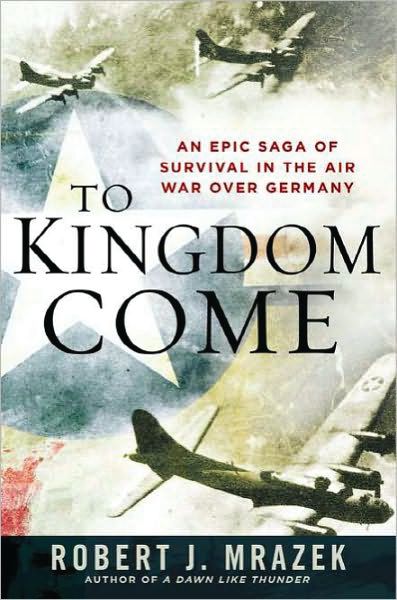 To Kingdom Come: An Epic Saga of Survival in the Air War Over Germany by Robert J. Mrazek, Caliber Books, New York, 2011, 400 pp., index, photographs, $25.95, hardcover.
To Kingdom Come: An Epic Saga of Survival in the Air War Over Germany by Robert J. Mrazek, Caliber Books, New York, 2011, 400 pp., index, photographs, $25.95, hardcover.
Because of its industrial significance, Stuttgart, Germany, was the target of numerous Allied bombing raids during the war. For four and one-half years, the city endured numerous attacks that resulted in the deaths of nearly 4,600 residents and the destruction of more than 39,000 buildings.
However, the Allies suffered tremendous losses as well. Hundreds of Boeing B-17 Flying Fortresses and their flight crews were shot down. One of the deadliest raids was conducted on September 6, 1943, when 338 B-17s took off from their bases in England to bomb German military targets within the city. Nearly half did not even make it to their destination.
The author has interviewed six men about their personal experiences during the mission that resulted in the loss of 45 Flying Fortresses. Most were shot down, some held as prisoners of war, and others miraculously made their escape from the enemy with the assistance of the underground forces operating against the Nazis.
One such survivor, 2nd Lieutenant Jimmy Armstrong, spent weeks with the help of the French Underground avoiding capture after his plane, the Yankee Raider, crashed. His incredible adventure of passage on a fishing boat across the English Channel is riveting. Forced to go below in cramped quarters, he was bounced about as the tiny vessel pitched and rocked all the way to the port of Falmouth.
The book is a wonderful tribute, not only to the half-dozen veterans mentioned who survived that deadly day in the skies over Stuttgart in 1943, but also to the countless other airmen who braved the horrendous flak from German fighter planes and antiaircraft guns and did not come home.
 Hitler’s Savage Canary: A History of the Danish Resistance in World War II by David Lampe, Arcade Publishing, New York, 2011, 256 pp., index, $24.95, hardcover.
Hitler’s Savage Canary: A History of the Danish Resistance in World War II by David Lampe, Arcade Publishing, New York, 2011, 256 pp., index, $24.95, hardcover.
Alone and cut off from the main Allied forces during World War II, Denmark was forced to fend for itself. From the beginning of the country’s occupation, Hitler had said that the two nations, with similar Aryan backgrounds, could actually be one country. The Nazis expected no trouble from the Danes and did not even consider themselves an occupation force which, as the author states,was incorrect. Even Great Britain’s Prime Minister Winston Churchill called Denmark Hitler’s “tame canary.”
Both Hitler and Churchill would be proven wrong. Because of their fierce nationalism, the Danes formed one of the most ingenious resistance movements of any occupied nation in the conflict. Even British Field Marshal Bernard Law Montgomery was extremely impressed and referred to it as “second to none.”
Another amazing aspect of the Danes’ defiance of Nazi rule were the average citizens, many of whom did things to sabotage the German war effort. Danish workers secretly placed sugar into the concrete that built the gun emplacements, causing them to crack when the first howitzer was fired. Postmen opened letters mailed to the Gestapo headquarters to learn secrets. Others made copies of German blueprints, sending them to Great Britain to be studied.
Perhaps the greatest achievement by the Danish people was the rescuing of 7,000 Jews from the clutches of the Nazis. Many of these refugees would have certainly been transported to one of the Nazi extermination camps, never to be heard from again.
Lampe’s book is a true testament to the courage and determination of the Danish people.
Short Bursts
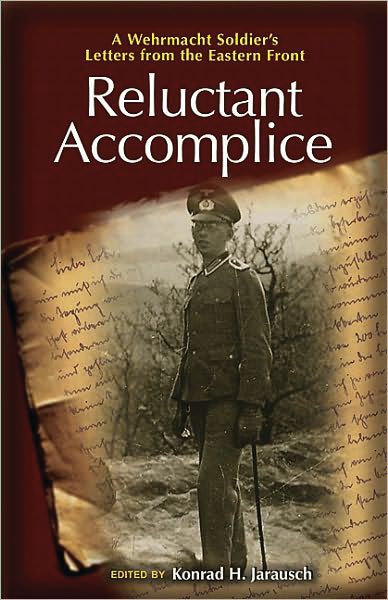 Reluctant Accomplice: A Wehrmacht Soldier’s Letters from the Eastern Front edited by Konrad H. Jarausch, Princeton University Press, Princeton, NJ, 2011, 412 pp., index, notes, photographs, $35.00, hardcover.
Reluctant Accomplice: A Wehrmacht Soldier’s Letters from the Eastern Front edited by Konrad H. Jarausch, Princeton University Press, Princeton, NJ, 2011, 412 pp., index, notes, photographs, $35.00, hardcover.
Here is a collection of compelling letters written by a German soldier who served at the outset of World War II on the Eastern Front. And what makes this book additionally intriguing is the fact that his son, noted German historian Konrad H. Jarausch, Jr., edited his father’s letters.
Initially, the younger Jarausch had deep concerns about confronting his father’s service in the German Army. He avoided reading the correspondence between him and his mother and other individuals for fear it would deeply trouble him.
However, when he finally began reading his father’s accounts of life in the army in Poland and Russia, the letters demonstrated another side of the soldier. In the beginning, his writings were those of a soldier filled with patriotism and believing in the Nazi cause. But, as the months dragged on, the elder Jarausch saw the war in a whole new light—not one of glory, but one of death and atrocities that the sensitive youth could not bear.
“We discovered another case of cannibalism today,” Jarausch wrote while a guard at a POW camp. “Yet the corpses, when they are carried without clothes to the graves, are scrawny like late gothic figures of Christ, frozen stiff. But the whole thing is already more murder than war.”
Turning the Tide: How a Small Band of Allied Sailors Defeated the U-Boats and Won the Battle of the Atlantic by Ed Offley, Basic Books, New York, 2011, 480 pp., bibliography, notes, photographs, $27.99, hardcover.
There is no doubt that the Battle of the Atlantic was a crucial part of the Allied victory in World War II. Great Britain, isolated and alone, was locked in combat with Nazi Germany and needed essential supplies to maintain the war effort. Thousands of merchant vessels sailed across the Atlantic to bring England the materials she sought to continue the fight—and patrolling those waters were the German U-boats bent on sinking as many ships as possible and bringing England to her knees.
This book details the Allied effort in delivering war materiel to the island nation in spite of the constant U-Boat threat. Fighting in the Atlantic began in September 1939, just a few days after Hitler’s army invaded Poland. For five and one-half years both sides slugged it out to gain supremacy on the high seas.
When it was over, The U.S. lost 71,000 civilian crew members and gunners, and 9,500 Merchant Marine crewmen also perished. The Brits fared much worse with nearly 25,000 of their merchant seaman lost at sea. The Germans paid a heavy price, losing 717 of their 830 commissioned U-boats.
The author has done a marvelous job paying homage to the men who risked their lives keeping the sea lanes open and winning the Battle of the Atlantic and eventually the war itself.
 Racing the Sunrise: Reinforcing America’s Pacific Outposts, 1941-1942 by Glen Williford, Naval Institute Press, Annapolis, MD, 2010, 398 pp., index, notes, photographs, $37.95, hardcover.
Racing the Sunrise: Reinforcing America’s Pacific Outposts, 1941-1942 by Glen Williford, Naval Institute Press, Annapolis, MD, 2010, 398 pp., index, notes, photographs, $37.95, hardcover.
The author, one of the cofounders of the Coast Defense Study Group, attempts to disprove the statement that remote U.S. Pacific bases such as Guam, Wake Island, Midway, and the Philippines were not being supplied at the outbreak of World War II.
Herculean supply efforts were underway six months prior to hostilities against Japan. In mid-1941, both the Army and Navy began to bolster their garrisons at Pearl Harbor, and General Douglas MacArthur was a persuasive spokesman for resupplying the Philippines.
By late 1941 and early 1942, a major effort was underway to rush supplies to these isolated bases. This account focuses on the plans and methods employed to reinforce the outposts six months before the Japanese surprise attack on Pearl Harbor.
Finding the Foe: Outstanding Luftwaffe Mysteries of the Battle of Britain and Beyond Investigated and Solved by Andy Saunders, Grub Street Publishing, London, England, 2010, 208 pp., index, photographs, $39.95, hardcover.
Author Andy Saunders, an aviation historian specializing in the air war over Europe from 1939-1945, has become a modern-day Hercule Poirot in attempting to identify German pilots and flight crews lost over Great Britain during World War II.
Although these are German pilots, the author feels that the “airmen fought and died … in the service of their country,” leaving behind loved ones who mourned their loss. Just as it is important to bring closure to Allied servicemen, it is just as imperative that the same be done for the opposing side.
Saunders asks that anyone with information on any case of a missing German air crew member notify him through the publisher’s address or website at [email protected].
 The Children’s War, Germany 1939-1949 by Peter Bodo Gawenda, Brown Books Publishing Group, Dallas, TX, 2010, 338 pp., photographs, $24.95, hardcover.
The Children’s War, Germany 1939-1949 by Peter Bodo Gawenda, Brown Books Publishing Group, Dallas, TX, 2010, 338 pp., photographs, $24.95, hardcover.
Here is a unique book on war as viewed through the eyes of children. The place is Germany, 1939. Peter Bodo Gawenda’s father has been drafted into the German Army, leaving his family to fight for the Third Reich and eventually enduring years as a POW until his miraculous return. It also depicts the harsh conditions that his family had to endure, especially as the war was winding down. Food, clothing, and medical supplies, were always in constant demand.
Gawenda also has shared a list of “Children’s Rules” that were implemented during the conflict. Some of them include never throw away food, leave the room when adults speak in low voices, and never lie.
The book delves into his mother’s decision to leave their hometown when Russian troops were approaching. Their arduous trek took them through Poland, Czechoslovakia, Austria, where they escaped from an internment camp, and finally into Bavaria. The journey took them eight months. This is a fascinating and, at the same time, a tragic story of one family’s plight and survival during the war.
Dogfight: The Greatest Air Duels of World War II edited by Tony Holmes, Osprey Publishing, Long Island, NY, 2011, 352 pp., bibliography, photographs, $25.95, softcover.
There is nothing more exciting than witnessing two fighter pilots engaged in an aerial duel. Usually this air-to-air combat lasts only for a matter of seconds before one skilled pilot outlasts, outmaneuvers, and outguns, his opponent.
In his new book, aviation historian Tony Holmes takes the reader through World War II by examining the aircraft used by the Allies and Axis powers. The planes include Great Britain’s Supermarine Spitfire and Seafire, Germany’s Messerschmitt Me-109 and Focke Wulf Fw-190, the U.S. North American P-51 Mustang, Curtiss P-40 Warhawk, and Republic P-47 Thunderbolt, and Japan’s Nakajima Ki-43 Oscar and Mitsubishi Zero. Each is closely scrutinized for its performance.
But it was more than just the plane—it was the skills of the pilot who handled it—that resulted in victory or defeat. These top guns of their day swirled, dodged, and looped their way around each other in what have become classic dogfights in aviation history.
“If you want to kill that guy,” one pilot said, “the best thing to do is get around behind him where he can’t see you … and shoot him.” n
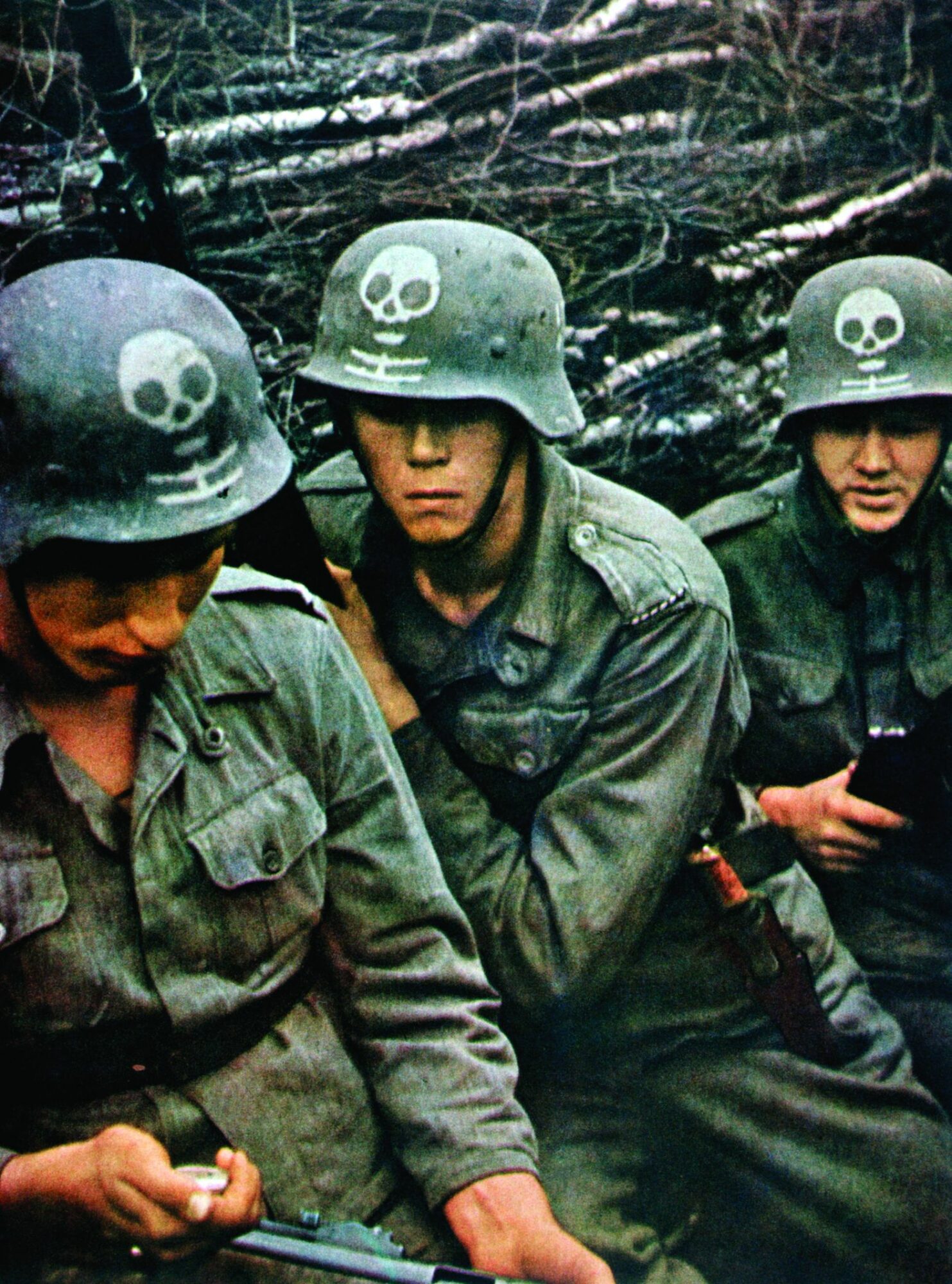
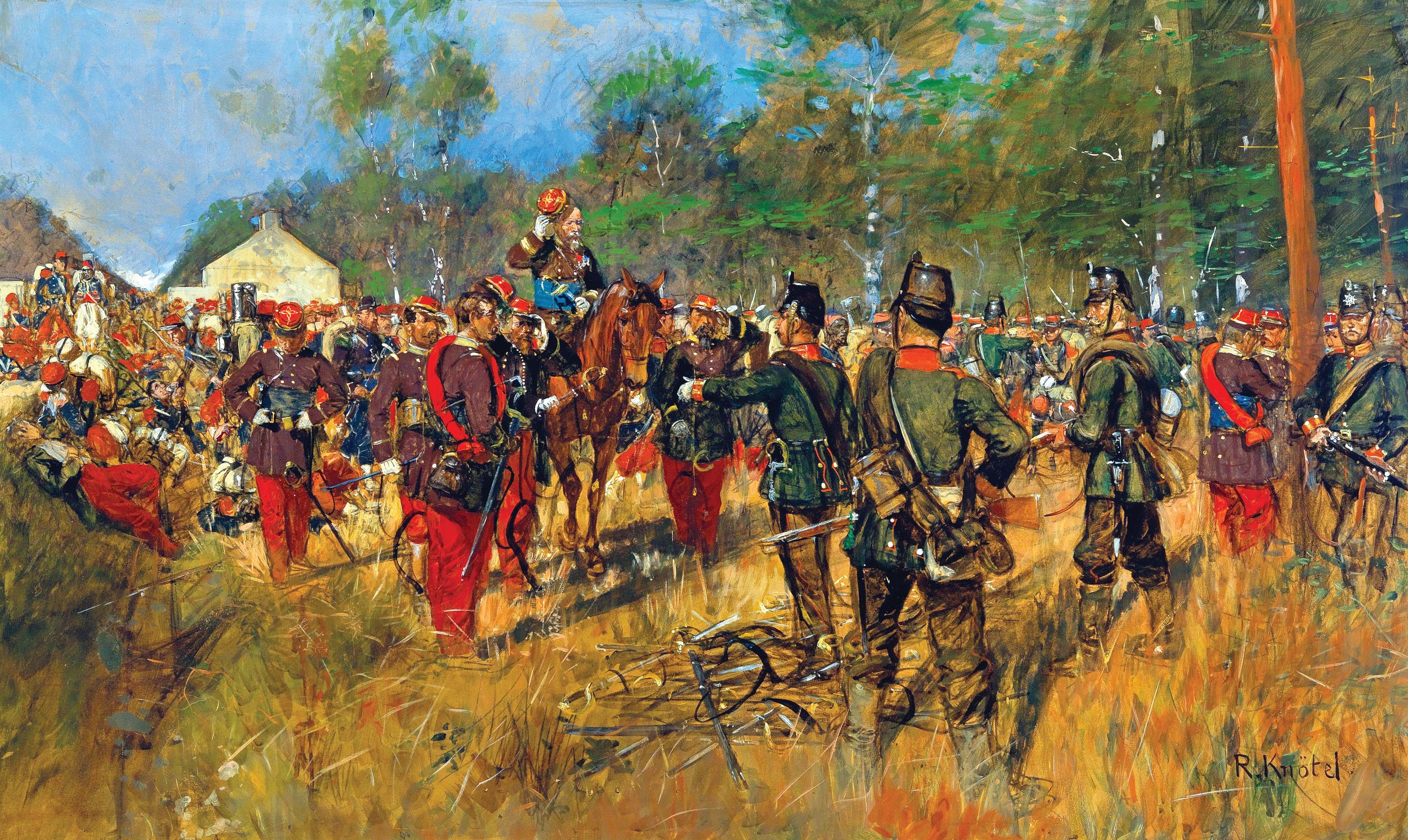
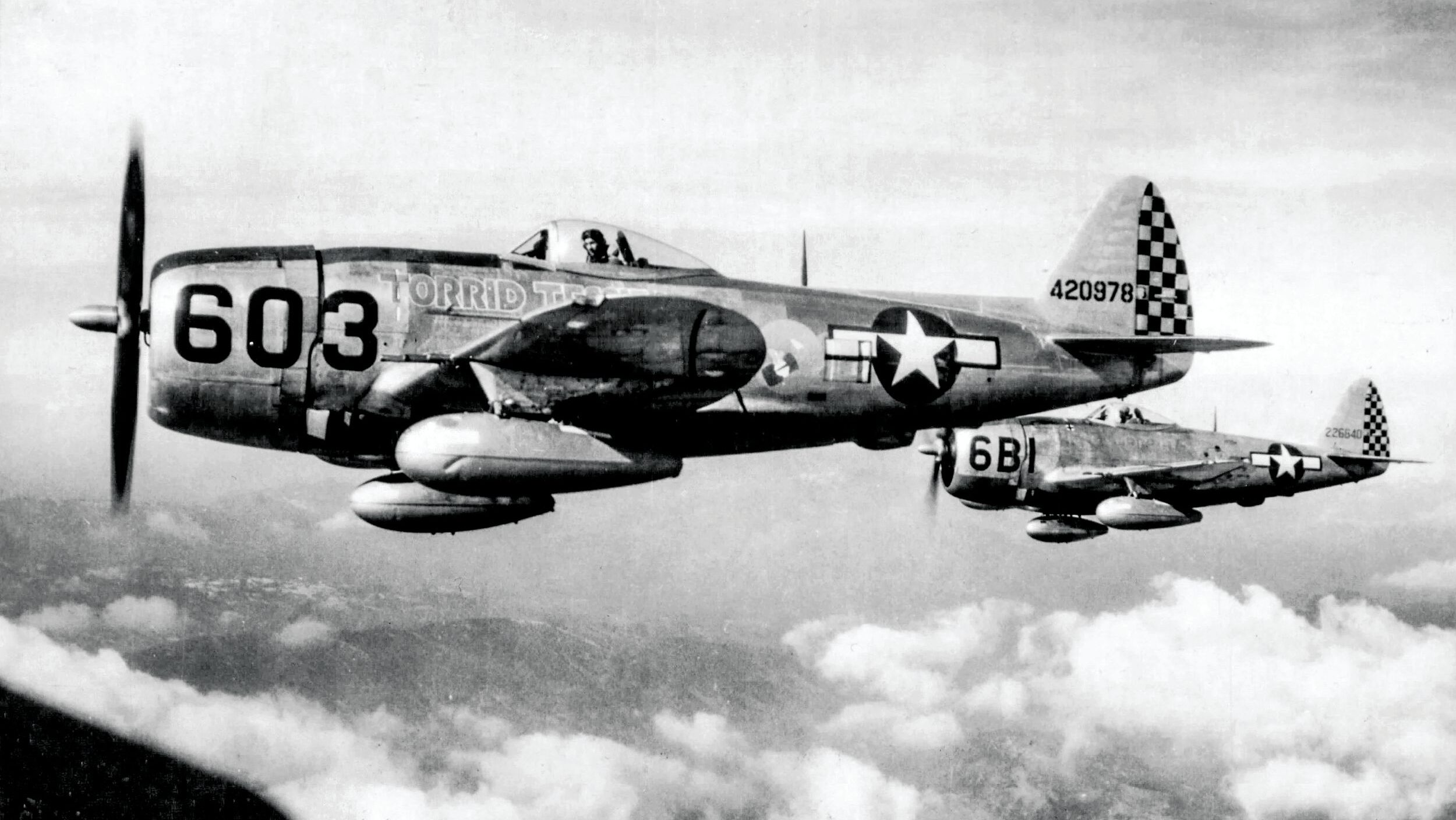
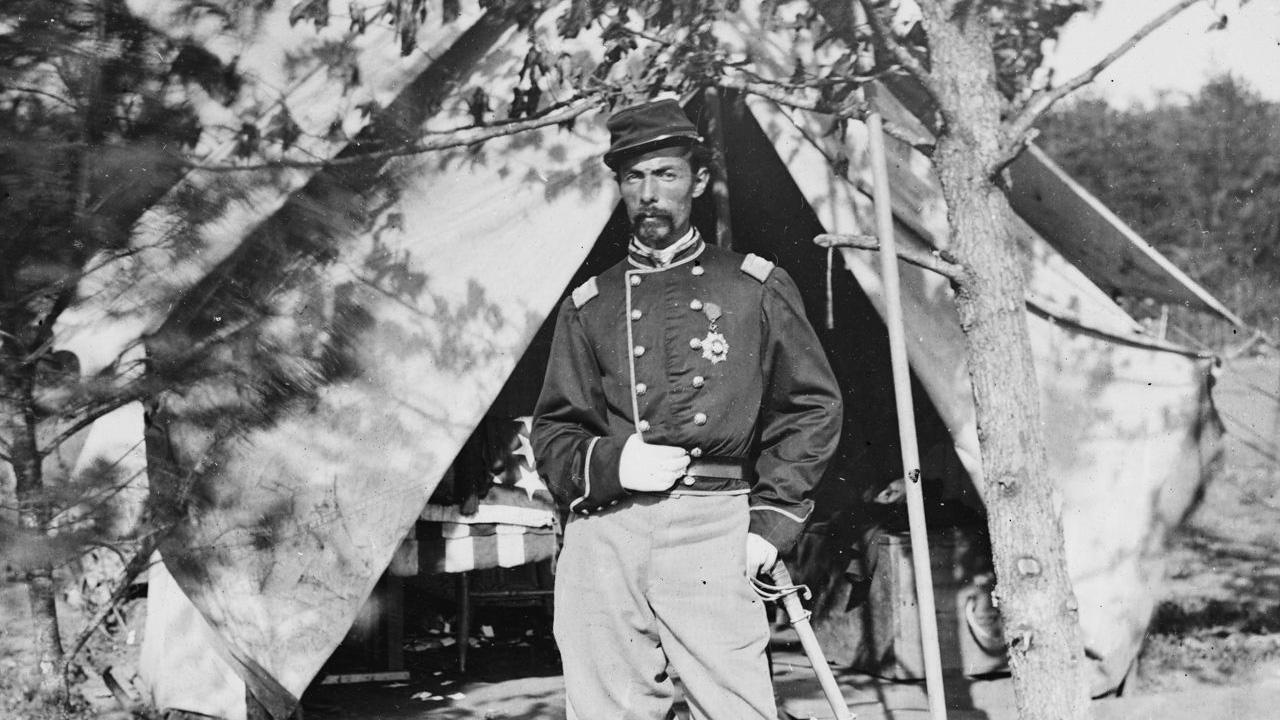
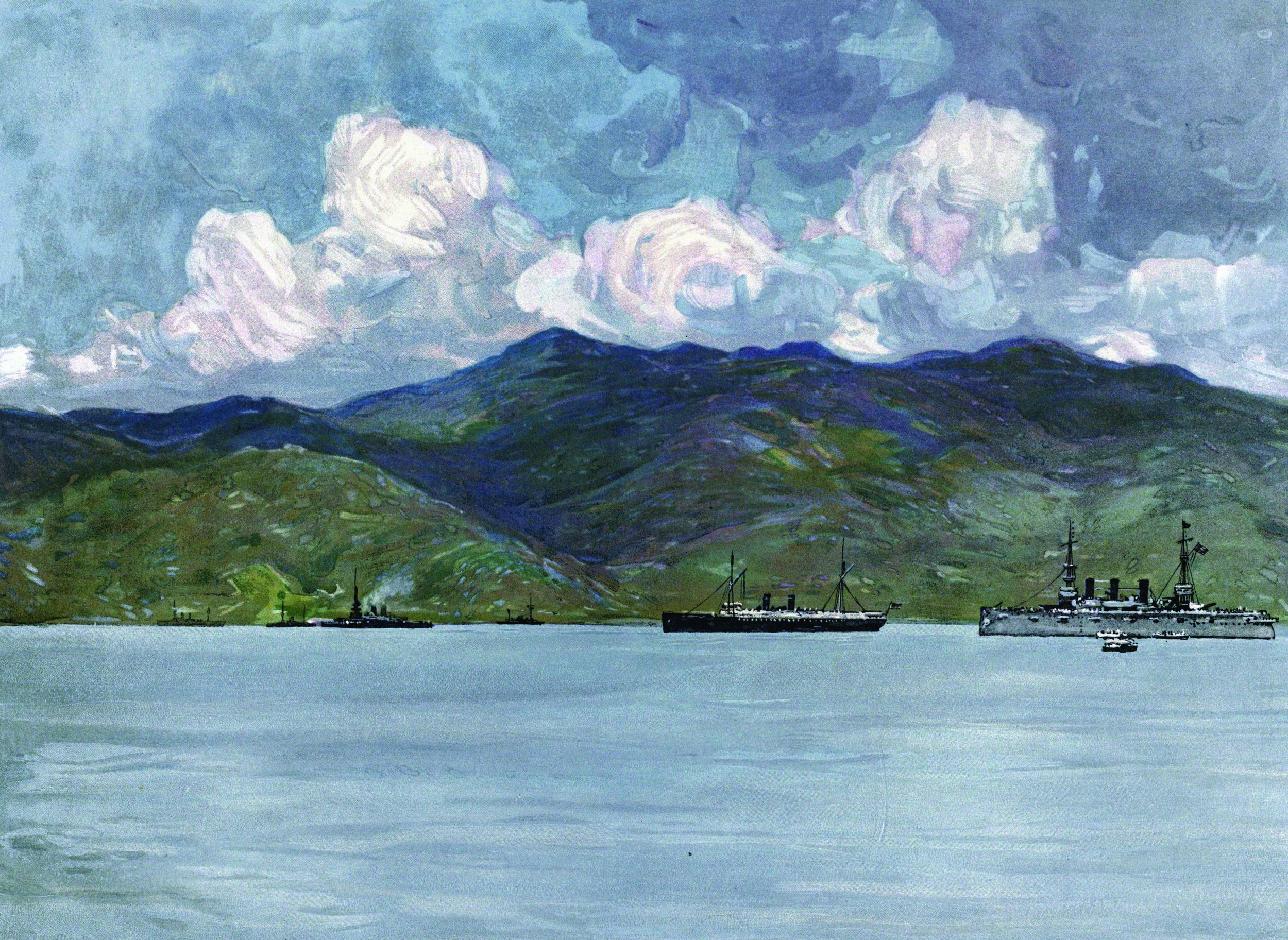
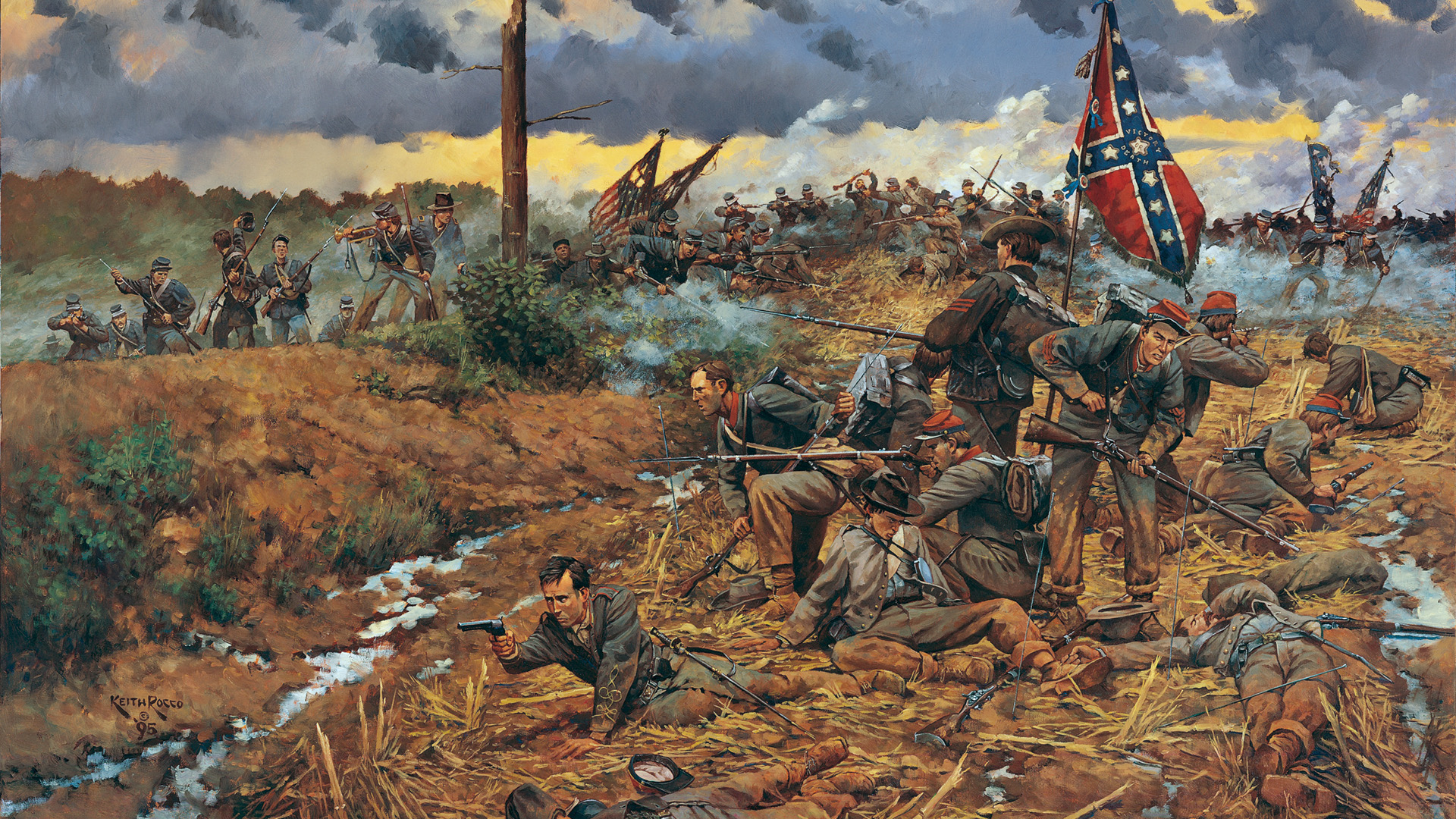

Join The Conversation
Comments
View All Comments